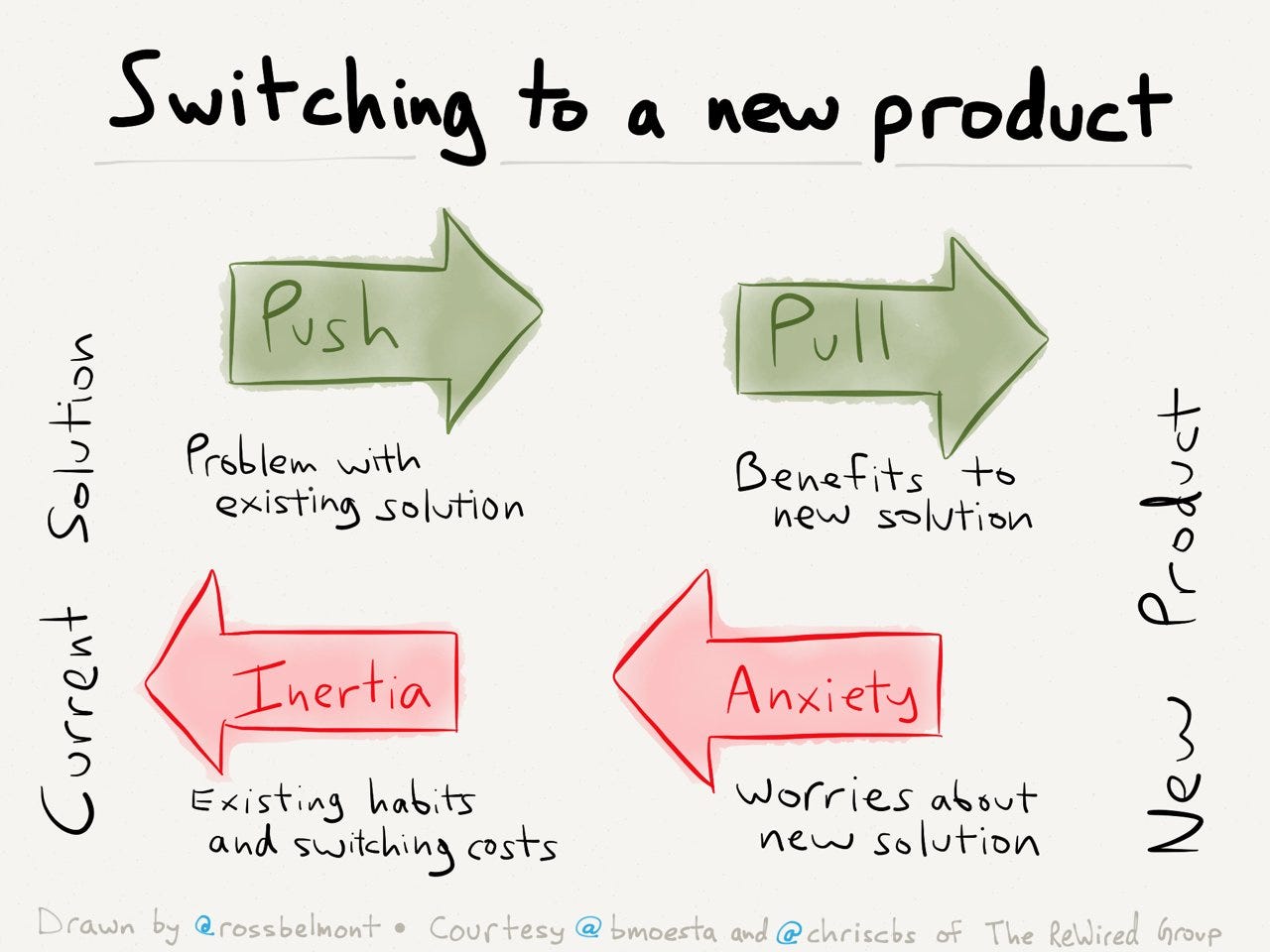Mental Models for Product Strategy and Roadmaps
Prioritizing product features is more art than science. Here are several models I've found helpful throughout my career to help inform strategy or roadmap decisions.
Strategy and feature prioritization is more art than science. While some features are prioritized due to customer promises or to help close specific deals, most decisions stem from building intuition about customers and markets. I've always valued mental models and frameworks that serve as guardrails to guide us toward optimal decisions. Here are several models I've found helpful throughout my career to help inform strategy or roadmap decisions.
Finding Product-Market Fit by Focusing on the Somewhat Disappointed Users
When building something new, finding product-market fit (PMF) should be your primary focus. All decisions should center on learning and iterating. Rahul Vohra from Superhuman developed a systematic approach to measure and optimize for PMF, which I find fascinating.
In summary, Vohra's approach works like this:
Survey current users with a simple question: "How would you feel if you could no longer use the product?" with possible answers being "Very Disappointed," "Somewhat Disappointed," or "Not Disappointed."
Focus on the 'Somewhat Disappointed' users rather than the other two groups. Users who would be 'Not Disappointed' if your product disappeared are likely poor fits for your offering or are too far gone. Meanwhile, users who would be 'Very Disappointed' without your product are already satisfied enthusiasts. The middle 'Somewhat Disappointed' segment represents your greatest opportunity - they see value in your product but encounter obstacles preventing full adoption.
Research and analyze the "Somewhat Disappointed" segment to understand how to convert them into enthusiastic supporters.
Build your roadmap to address what holds the middle segment “Somewhat Disappointed” group back and turn them into "the “Very Disappointed” group.
Rinse and repeat
While algorithmically achieving PMF isn't guaranteed, this systematic approach helps segment customers and focus your research effectively. I recommend complementing this with Jobs To Be Done (JTBD) interviews to better understand customer behaviors, motivations, and tradeoffs of the middle segment.
Solution Deepening versus Market Widening
This concept, also from Rahul Vohra, distinguishes between two types of capability development:
Solution Deepening: Improving existing capabilities to further delight current customers
Market Widening: Developing capabilities to attract new market segments and fulfill additional jobs-to-be-done
The key is to consciously clarify which of the two strategies you're pursuing and which capabilies help you get there.
Kano Model
Another model I turn to when I try to think through product strategy and priorities, is the Kano model. The Kano Model helps prioritize features based on customer satisfaction and needs:
Must-Have Features (Baseline): These are basic market expectations that customers take for granted when present but cause extreme dissatisfaction when absent.
One-Dimensional Features (Wants): These features have a linear relationship between implementation and satisfaction—better implementation leads to greater satisfaction, while poor implementation decreases satisfaction.
Delight/Excitement Features: These unexpected features greatly please customers when present. They create disproportionate satisfaction and delight without causing dissatisfaction when absent.
An important aspect of the Kano Model is that as markets mature, consumer expectations evolve, and technology advances, features migrate downward: Delight → Wants → Baseline. As this happens, you must continually discover and deliver new Delight features while enhancing Wants features. Using this classification alongside an understanding of consumer motivations can significantly improve roadmap prioritization.
JTBD Forces of Progress
One of the most powerful models in the Jobs To Be Done theory comes from Bob Moesta: The Forces of Progress. This model recognizes that when consumers seek a solution and make choices, four forces either help or hinder their progress toward finding a solution:
Forces That Aid Progress:
Push of the Current Situation: When customers experience issues with their existing solution, eventually creating enough discomfort to push them toward seeking something new.
Pull of the New Solution: As customers evaluate potential solutions, they assess how capabilities align with their desired outcomes and imagine a better future.
Forces That Hinder Progress:
Anxiety of the New Solution: Concerns about the new solution working properly, migration challenges, training requirements, and other uncertainties.
Habit of the Present/Inertia: The comfort, familiarity, and established processes with the current solution, which can be difficult and politically sensitive to change.
Many product teams focus primarily on the Push and Pull forces—identifying problems and building aligned solutions. However, they often struggle to make market headway because they neglect the two hindering forces.
Example: House Hunting
Consider someone looking for a new house:
Push: "Our current house is too small since we had another child. We want a more open layout for better family interactions."
Pull: "The houses we've looked at are much larger and have beautiful open floor plans."
Anxiety: "Many homes in our area are 100 years old and could be money pits. Will we find a comparable backyard? Will the neighbors be friendly?"
Habit/Inertia: "We love our street, location, and current neighbors. Maybe renovating our existing home would be better than moving."
Modeling customer behavior around these forces can help develop better features and roadmaps that not only pull more customers with struggles but also help overcome anxiety and inertia. Consider prioritizing features specifically designed to address customers' change anxiety or habit of the present.
Conclusion
Strategy and roadmapping remain creative endeavors, but using these mental models can significantly improve decision-making. They provide structured ways to think about customer needs, market positioning, and adoption barriers, ultimately leading to more successful products.
What other models or methods do you use to help develop a better strategy and roadmap?



